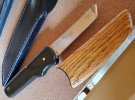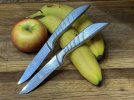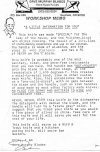- Joined
- Feb 8, 2010
- Messages
- 1,135
Hello,
I came up with a project idea the other day. I thought of grabbing a folding knife blade and turning it i to a fixed blade knife by casting a handle around the base of the blade maybe 1 inch deep. I was originally thinking copper but then it dawned on me that even if I used something like aluminum I would be exposing an already heat treated blade to at least 1220F which would surely ruin the heat treatment of the blade? How did they do it in the case of knives like the Gerber Mark 1 & 2? Did they do the heat treatment after casting the handle or did they simply glue it in place? Any ideas?
Thank you!
I came up with a project idea the other day. I thought of grabbing a folding knife blade and turning it i to a fixed blade knife by casting a handle around the base of the blade maybe 1 inch deep. I was originally thinking copper but then it dawned on me that even if I used something like aluminum I would be exposing an already heat treated blade to at least 1220F which would surely ruin the heat treatment of the blade? How did they do it in the case of knives like the Gerber Mark 1 & 2? Did they do the heat treatment after casting the handle or did they simply glue it in place? Any ideas?
Thank you!



